Aircraft antennas are critical for enabling communication‚ navigation‚ and surveillance systems in aviation. They ensure reliable data transmission‚ safety‚ and connectivity at various frequencies‚ including VHF‚ UHF‚ and satellite bands. With advancements in technology‚ antennas are now integrated into aircraft structures for improved aerodynamics and performance. The global market for aircraft antennas is growing rapidly‚ driven by increasing demand for advanced communication systems and next-generation aviation technologies. However‚ challenges such as signal interference‚ weight constraints‚ and installation complexity remain key considerations in their design and implementation.
1.1 Overview of Aircraft Antennas
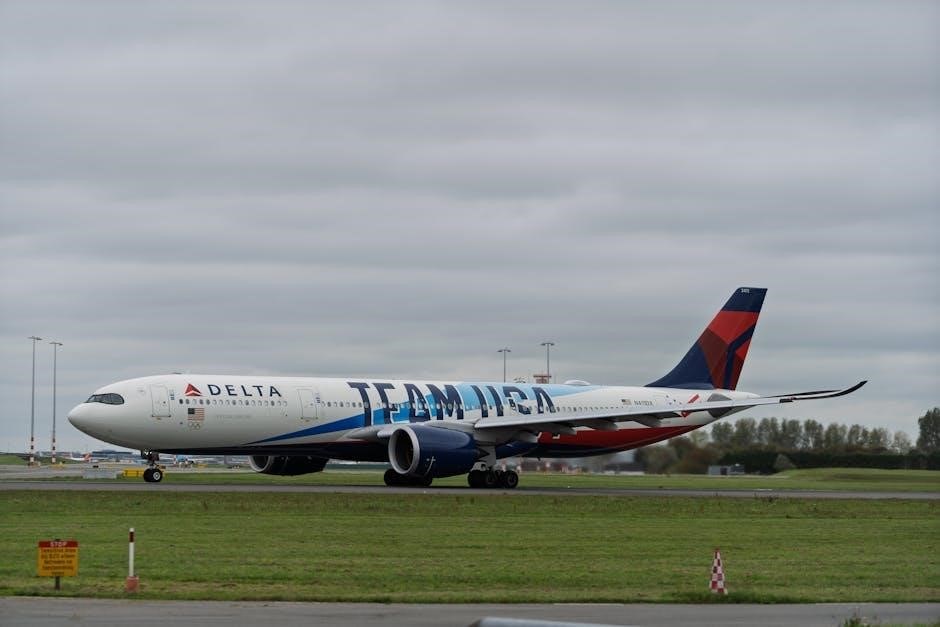
Aircraft antennas are essential components enabling communication‚ navigation‚ and surveillance in aviation. They operate across various frequency bands‚ including VHF‚ UHF‚ and satellite communication‚ ensuring reliable connectivity. These antennas are designed to withstand harsh environmental conditions and aerodynamic stresses while maintaining optimal performance. Installation techniques vary‚ with some antennas mounted on the skin or integrated into the aircraft structure for reduced drag. Modern designs emphasize conformal antennas‚ which blend seamlessly with the aircraft’s surface‚ enhancing aerodynamics. The global market for aircraft antennas is expanding‚ driven by advancements in technology and increasing demand for high-speed connectivity. Their role is critical in supporting safe and efficient flight operations‚ making them a cornerstone of modern aviation systems.
1.2 Importance in Modern Aviation
Aircraft antennas play a vital role in modern aviation by enabling seamless communication‚ navigation‚ and surveillance. They ensure pilots stay connected with air traffic control‚ access critical weather data‚ and rely on GPS for precise navigation. The increasing demand for high-speed internet connectivity onboard has further highlighted their importance‚ with technologies like Starlink Wi-Fi being integrated into aircraft. Antennas also support surveillance systems‚ enhancing safety and reducing collision risks. Recent advancements‚ such as anti-jam GPS antennas for military applications‚ demonstrate their evolving role in addressing emerging challenges. As the aviation industry grows‚ the demand for high-performance antennas continues to rise‚ making them indispensable for modern aircraft operations and passenger experience.

Types of Aircraft Antennas
Aircraft antennas include VHF‚ UHF‚ HF‚ satellite‚ radar‚ and navigation types‚ each designed for specific communication‚ navigation‚ and surveillance functions in aviation systems.
2.1 VHF and UHF Antennas

VHF (Very High Frequency) and UHF (Ultra High Frequency) antennas are critical for aircraft communication systems‚ operating between 30 MHz to 1 GHz; VHF antennas handle voice and data for air traffic control and navigation‚ while UHF antennas support military and satellite communications. These antennas are typically mounted on wingtips or fuselage to ensure omnidirectional coverage. Their compact design minimizes drag‚ and they are built to withstand harsh environmental conditions. Installation locations are chosen to maximize signal strength and reduce interference. These antennas are essential for reliable communication in both civilian and military aviation‚ ensuring clear transmission and reception of critical information during flights.
2.2 HF and Satellite Communication Antennas
HF (High Frequency) and satellite communication antennas are essential for long-range communication in aircraft. HF antennas operate in the 2-30 MHz range‚ enabling global communication over vast distances‚ especially in remote areas with limited infrastructure. Satellite antennas‚ meanwhile‚ facilitate communication through orbiting satellites‚ ensuring connectivity for both voice and data transmission. These antennas are often mounted on the aircraft’s upper fuselage or vertical stabilizer to maintain optimal line-of-sight with satellites. They are critical for real-time weather updates‚ navigation‚ and emergency communication. In modern aviation‚ HF and satellite antennas provide redundancy and reliability‚ especially during flights over oceans or regions with limited ground-based infrastructure.
2.3 Radar and Navigation Antennas
Radar and navigation antennas are critical for enhancing situational awareness and ensuring safe flight operations. Radar antennas‚ often mounted on the aircraft’s nose or wings‚ operate at frequencies like X-band or S-band to detect weather patterns‚ terrain‚ and other aircraft. They provide vital data for collision avoidance and navigation systems. Navigation antennas‚ such as GPS antennas‚ receive signals from satellite constellations to determine precise location and altitude. These antennas are typically installed on the fuselage or wingtips to maximize signal reception. Both types are designed to withstand harsh environmental conditions‚ ensuring reliability during all phases of flight. Their integration with avionics systems underscores their essential role in modern aviation safety and efficiency.
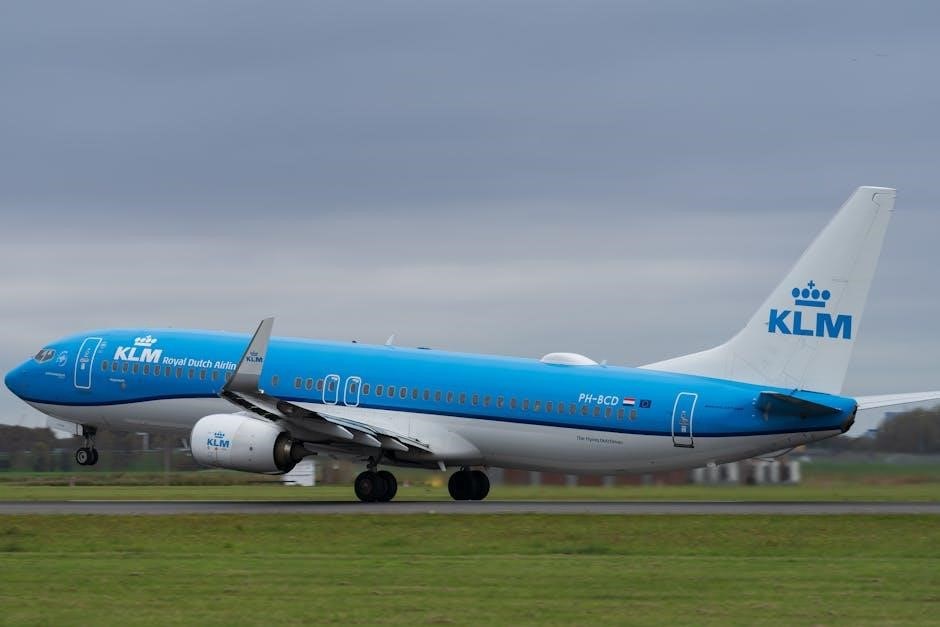
Design Considerations
Design considerations for aircraft antennas focus on aerodynamic efficiency‚ material durability‚ and electromagnetic performance to optimize communication and navigation capabilities while ensuring reliability in harsh environments.
3.1 Aerodynamic Factors
Aerodynamic factors are critical in aircraft antenna design to minimize drag and ensure smooth airflow. Antennas must be shaped to reduce air resistance‚ often using flush-mounted or conformal designs. Placement is optimized to avoid disrupting laminar flow‚ typically on the fuselage or wing leading edges. Wind tunnel testing is essential to assess aerodynamic impact and refine designs. Prototyping and computational simulations help predict airflow behavior. The goal is to balance performance with minimal drag‚ ensuring fuel efficiency and maintaining aircraft speed. Additionally‚ antennas must withstand turbulence and airflow stresses without compromising structural integrity. Aerodynamic considerations are vital for both fixed-wing and rotorcraft applications‚ ensuring seamless integration with the aircraft’s overall design. Proper design enhances both performance and safety.
3.2 Material Selection for Durability
Material selection for aircraft antennas is crucial to ensure durability and performance in harsh environments. Antennas are exposed to extreme temperatures‚ moisture‚ and turbulence‚ requiring robust materials. Commonly used materials include fiberglass‚ composites‚ and metal alloys‚ which offer high strength-to-weight ratios. Fiberglass is often chosen for its lightweight and weather-resistant properties‚ while composites provide excellent durability and resistance to environmental stress. Metal alloys‚ such as aluminum‚ are used for their conductivity and structural integrity. Protective coatings are applied to prevent corrosion and ensure longevity. The choice of material must also consider electromagnetic performance‚ weight‚ and cost. Durable materials are essential for maintaining reliable communication and navigation systems in demanding aviation conditions.
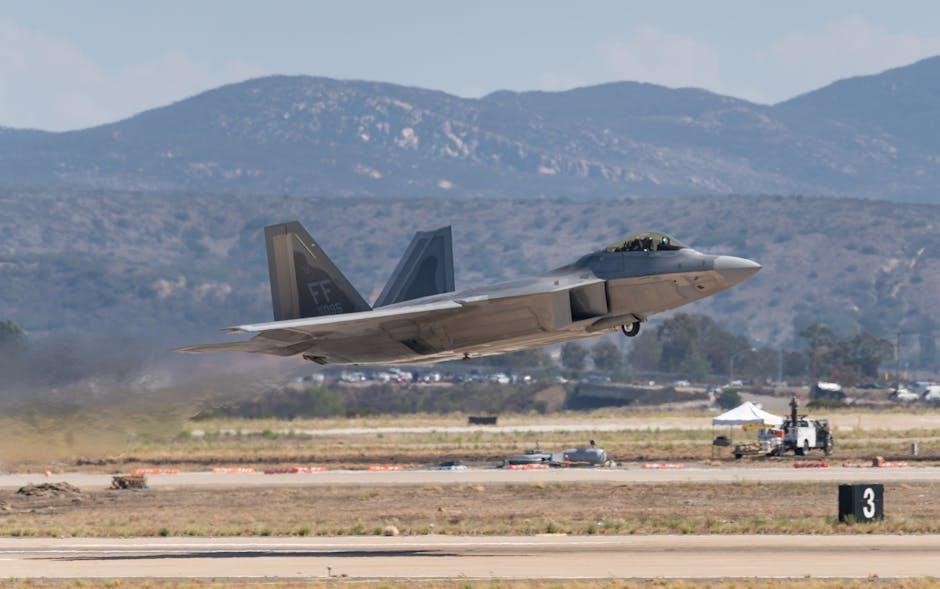
3.3 Electromagnetic Modeling
Electromagnetic modeling is a critical step in designing aircraft antennas‚ ensuring optimal performance and integration with the aircraft’s structure. Advanced simulation tools‚ such as CST Microwave Studio or Ansys HFSS‚ are used to analyze how electromagnetic waves interact with the antenna and surrounding surfaces. These models account for factors like frequency‚ polarization‚ and the presence of nearby metallic structures‚ which can cause reflections or interference. By simulating real-world conditions‚ engineers can predict antenna behavior‚ including gain patterns‚ impedance matching‚ and radiation efficiency. This process minimizes the need for physical prototypes and ensures the antenna operates effectively across various flight scenarios‚ supporting reliable communication‚ navigation‚ and radar systems. Accurate modeling is essential for modern aviation requirements.
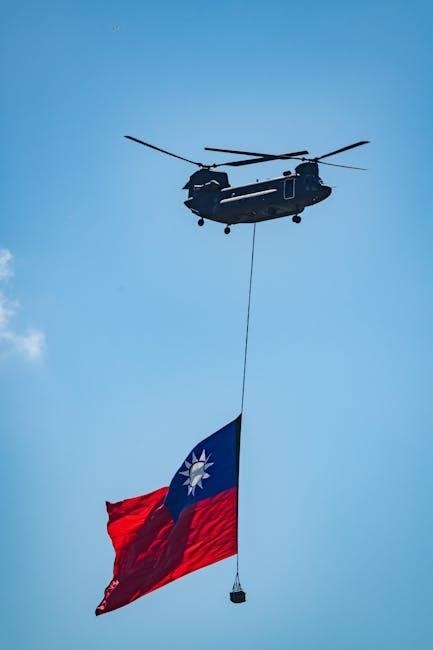
Installation and Mounting
Proper installation and mounting of aircraft antennas ensure optimal performance‚ minimize drag‚ and reduce interference. Techniques include flush mounting or blade antennas‚ strategically positioned on the fuselage‚ wings‚ or tail for maximum efficiency and safety.
4.1 Mounting Techniques and Locations
Aircraft antennas are mounted using techniques that minimize aerodynamic impact while ensuring optimal signal performance. Common locations include the fuselage‚ wings‚ and tail sections. Flush mounting is preferred to reduce drag‚ while blade antennas are often installed vertically on the stabilizer for communication. Some antennas are embedded within the aircraft’s skin to maintain aerodynamics. The choice of location depends on the antenna’s frequency range and the aircraft’s design. Strategic placement ensures minimal interference from other systems while maintaining clear line-of-sight for signals. Proper installation considers weight distribution‚ structural integrity‚ and accessibility for maintenance. Mounting techniques must adhere to aviation standards to ensure safety and efficiency.
4.2 Electrical Bonding and Grounding
Electrical bonding and grounding are critical for aircraft antennas to ensure proper signal transmission and safety. Bonding connects the antenna to the aircraft’s conductive structure‚ preventing static buildup and ensuring a reliable electrical path. Grounding provides a return path for currents‚ reducing electromagnetic interference (EMI) and ensuring proper operation. Materials like conductive gaskets or meshes are used to maintain electrical continuity while sealing against environmental factors. Improper bonding or grounding can lead to signal degradation‚ EMI issues‚ or even damage from lightning strikes. Therefore‚ adherence to aviation standards is essential to guarantee the system’s performance‚ safety‚ and reliability during flight operations and communication.
4.3 Integration with Aircraft Systems
Integration of aircraft antennas with onboard systems is essential for seamless communication‚ navigation‚ and radar operations. Antennas must work in harmony with avionics‚ ensuring data synchronization and reducing interference. Proper integration allows systems like GPS‚ collision avoidance‚ and weather radar to function accurately. It also enables real-time data sharing‚ enhancing situational awareness for pilots. However‚ challenges arise from electromagnetic interference and system compatibility. Advanced engineering ensures antennas are optimized for integration‚ minimizing signal loss and maximizing performance. This synergy is critical for modern aviation‚ where interconnected systems rely on precise antenna functionality to maintain safety‚ efficiency‚ and operational readiness during all phases of flight.
Challenges in Aircraft Antenna Systems
Aircraft antennas face challenges like signal interference‚ aerodynamic constraints‚ and maintaining performance across varying frequencies. Weight‚ drag‚ and environmental factors also impact reliability and system integration.
5.1 Signal Interference and Noise
Signal interference and noise are critical challenges in aircraft antenna systems‚ impacting communication and navigation reliability. Electromagnetic interference (EMI) from onboard electronics and external sources disrupts signals‚ while noise from engines and avionics complicates data transmission. Additionally‚ frequency overlap between systems and environmental factors like weather and solar activity exacerbate interference. These issues can degrade antenna performance‚ leading to communication errors and navigation inaccuracies. To mitigate this‚ advanced filtering techniques‚ shielding‚ and precise antenna placement are essential. Regular maintenance and system calibration further ensure optimal signal integrity‚ safeguarding aircraft operations and safety.
5.2 Weight and Drag Considerations
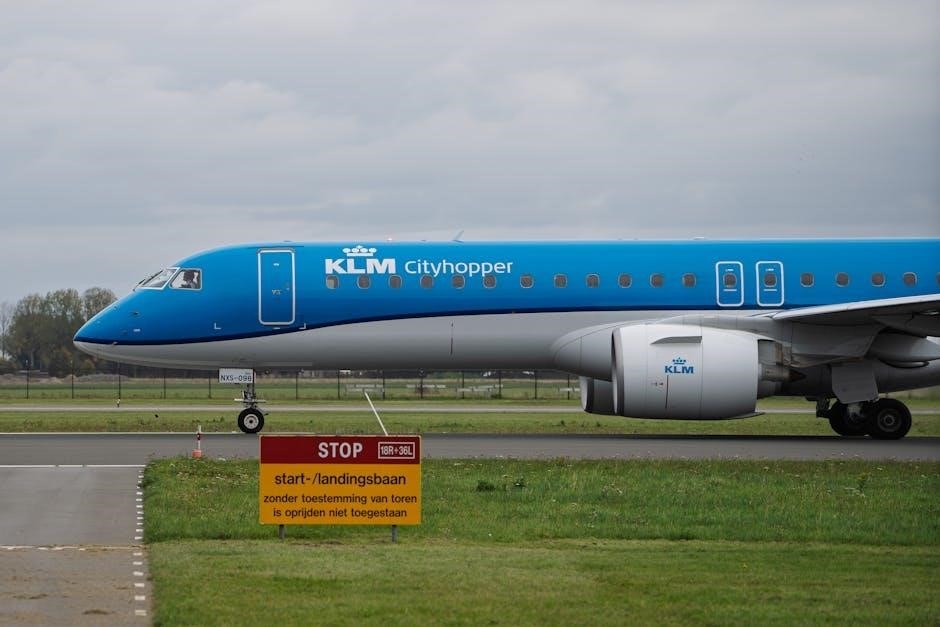
Weight and drag are essential factors in aircraft antenna design‚ as they directly impact fuel efficiency and performance. Excess weight increases fuel consumption‚ while antennas protruding from the aircraft’s surface can create drag‚ reducing aerodynamic efficiency. To address this‚ modern antennas are designed to be lightweight and aerodynamically shaped‚ minimizing their impact on the aircraft’s overall performance. Some antennas are even embedded within the fuselage or wings to eliminate drag entirely. Balancing these factors ensures optimal aircraft operation without compromising communication or navigation capabilities. Innovations in materials and design continue to reduce weight and drag‚ enhancing overall aircraft efficiency and operational range.
5.3 Maintenance and Reliability Issues
Maintenance and reliability are critical for aircraft antennas‚ as they operate in harsh environments and are essential for safe communication and navigation. Regular inspections and performance checks are required to ensure optimal functionality. Environmental factors‚ such as extreme temperatures‚ moisture‚ and physical damage from debris‚ can degrade antenna performance over time. Additionally‚ antennas mounted on the aircraft’s exterior are prone to damage from bird strikes or weather conditions‚ which can lead to signal degradation. Delays in maintenance can result in system failures‚ posing significant safety risks. Therefore‚ robust maintenance practices and reliable designs are essential to minimize downtime and ensure uninterrupted communication and navigation capabilities.
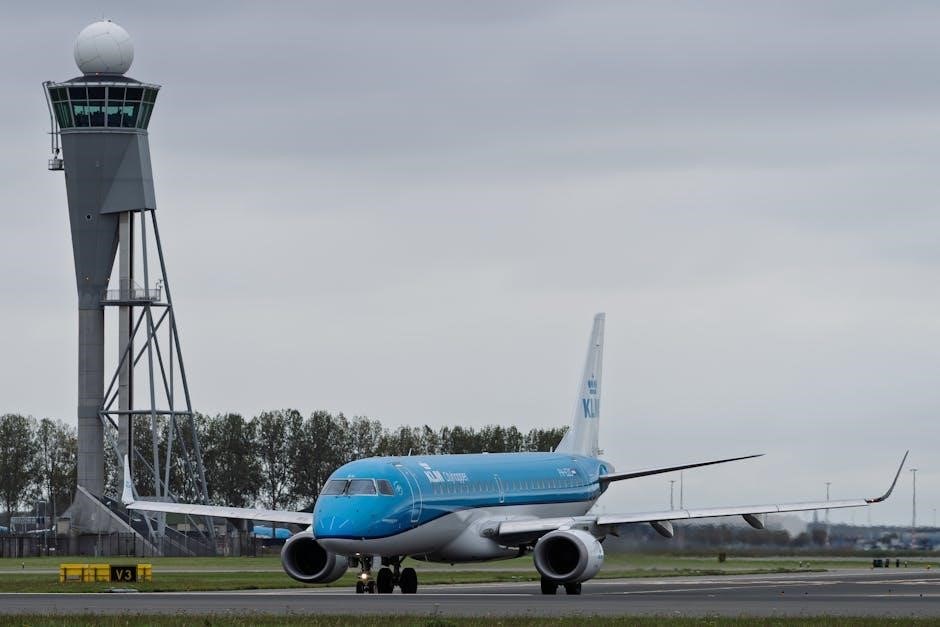
Applications of Aircraft Antennas
Aircraft antennas are crucial for communication‚ navigation‚ and radar systems‚ supporting safe and efficient flight operations by integrating essential technologies for crew and passenger safety.
6.1 Communication Systems
Aircraft antennas play a vital role in enabling reliable communication systems for both voice and data transmission. They facilitate communication between pilots and air traffic control‚ ensuring safe takeoffs‚ landings‚ and en-route operations. These antennas support various frequency bands‚ including VHF‚ UHF‚ and HF‚ catering to different communication needs. They also enable aircraft-to-aircraft communication‚ enhancing situational awareness and safety. Modern systems integrate satellite communication capabilities‚ allowing global connectivity even in remote areas. The antennas are designed to withstand harsh environments and provide uninterrupted signals‚ making them indispensable for maintaining clear and efficient communication in aviation operations.
6.2 Navigation and Surveillance
Aircraft antennas are essential for navigation and surveillance systems‚ ensuring precise positioning and situational awareness. They enable the reception of GPS signals for accurate navigation and support systems like ADS-B (Automatic Dependent Surveillance-Broadcast) for real-time traffic awareness. Antennas also facilitate communication with ground-based radar systems‚ enhancing collision avoidance and air traffic control. Additionally‚ they support weather radar systems‚ providing pilots with critical data on weather conditions. These antennas are designed to operate across multiple frequencies‚ ensuring reliable performance in diverse environments. Their role in navigation and surveillance is critical for maintaining safety‚ efficiency‚ and compliance with aviation regulations in modern air travel.
6.3 Radar and Weather Detection
Aircraft antennas play a vital role in radar and weather detection systems‚ enhancing flight safety and operational efficiency. These antennas enable the aircraft to transmit and receive radar signals‚ detecting obstacles‚ other aircraft‚ and weather phenomena. Weather radar antennas‚ specifically‚ use frequencies like X-band or K-band to scan for precipitation‚ turbulence‚ and icing conditions. This data is crucial for pilots to make informed decisions‚ avoiding hazardous weather and ensuring smooth navigation. Modern radar antennas are designed for high accuracy and reliability‚ integrating with advanced avionics systems. Their performance is critical for both tactical maneuvers and long-range flight planning‚ ensuring safe and efficient travel in diverse environmental conditions.
Future Trends and Innovations

Future trends in aircraft antennas focus on conformal designs‚ advanced materials‚ and integration with next-gen communication systems to enhance performance‚ reduce drag‚ and improve reliability.
7.1 Conformal and Integrated Antennas
Conformal and integrated antennas are revolutionizing aircraft communication systems by seamlessly embedding antennas into the aircraft’s structure‚ reducing drag‚ and enhancing aerodynamic performance. These antennas are designed to conform to the shape of the aircraft‚ such as wings or fuselage‚ minimizing protrusions and improving airflow. Integration with the airframe ensures optimal electromagnetic performance while maintaining structural integrity. Advanced materials like composite polymers and meta-materials enable these antennas to operate efficiently across multiple frequencies. This innovation not only enhances communication reliability but also reduces installation complexity and maintenance needs. Conformal antennas are particularly beneficial for next-generation aircraft‚ where stealth and efficiency are critical‚ offering a lightweight‚ compact‚ and high-performance solution for modern aviation demands.
7.2 Advanced Materials and Designs
Advancements in materials and designs are driving the evolution of aircraft antennas‚ enabling improved performance and reliability. Lightweight‚ high-strength materials like carbon fiber and advanced polymers are being used to reduce weight while maintaining durability. Metamaterials‚ engineered to manipulate electromagnetic waves‚ enhance antenna efficiency and enable multi-frequency operations. Innovative designs such as reconfigurable antennas adapt to changing conditions‚ optimizing communication across various environments. Additionally‚ 3D printing techniques are enabling complex geometries that minimize drag and integrate seamlessly with aircraft structures; These innovations ensure antennas meet the demands of modern aviation‚ offering superior functionality‚ reduced maintenance‚ and enhanced adaptability for future communication needs.
7.3 Integration with NextGen Systems
Aircraft antennas are increasingly being integrated with NextGen systems to enhance air traffic control and communication efficiency. These systems rely on advanced wireless communication protocols‚ requiring antennas to support data link technologies like ADS-B and satellite-based navigation. Antennas must ensure seamless interaction with ground infrastructure‚ enabling real-time data exchange for improved situational awareness. Integration with NextGen systems also involves compatibility with automated decision-making tools‚ reducing delays and increasing airspace capacity. As NextGen adoption expands‚ antennas will play a pivotal role in supporting high-speed‚ low-latency communication. This integration is critical for modernizing global air traffic management‚ ensuring safer and more efficient flight operations worldwide.
Market Analysis and Growth
The global aircraft antennas market is growing steadily‚ driven by increasing demand for advanced communication and navigation systems. Key players are investing in innovative solutions to meet rising aviation needs.
8.1 Global Market Size and Projections
The global aircraft antennas market size was valued at approximately $12.6 billion in 2022 and is projected to grow at a CAGR of 7% through 2032‚ reaching $23.4 billion. This growth is driven by increasing air traffic‚ military modernization‚ and the demand for advanced communication systems. The rising need for high-speed connectivity in civil aviation‚ coupled with technological advancements‚ is fueling market expansion. Key regions like North America and Europe dominate due to robust defense sectors‚ while Asia-Pacific is expected to see rapid growth due to rising defense budgets and airline fleet expansions.
8.2 Key Drivers and Challenges
The aircraft antennas market is driven by increasing demand for advanced communication systems‚ rising air traffic‚ and military modernization. The need for real-time data transmission and passenger connectivity further accelerates growth. However‚ challenges such as complex design requirements for multi-band operations and regulatory compliance pose hurdles. Additionally‚ the high cost of advanced materials and installation‚ coupled with maintenance complexities‚ hinder market growth. Despite these challenges‚ technological advancements and increasing defense budgets are expected to sustain demand‚ ensuring steady market expansion.
8.3 Major Players and Innovators
The global aircraft antennas market is dominated by key players such as Honeywell International‚ Collins Aerospace‚ and Cobham Limited‚ which specialize in advanced communication and navigation systems. Thales Group and L3Harris Technologies also play significant roles in developing cutting-edge antenna solutions for military and commercial aviation. Innovators like Antenna Research Associates and Comant Industries focus on designing high-performance antennas for specific applications. Additionally‚ emerging startups and research institutions are driving innovation through lightweight materials and conformal designs. These players invest heavily in R&D to meet the growing demand for reliable and efficient antenna systems‚ ensuring their products align with evolving aviation standards and customer needs.
Aircraft antennas are crucial for modern aviation‚ enabling communication‚ navigation‚ and safety. Advances in technology and design ensure reliable performance‚ driving future innovations and integration.
9.1 Summary of Key Points
Aircraft antennas play a vital role in modern aviation‚ ensuring seamless communication‚ navigation‚ and surveillance. They are categorized into types like VHF‚ UHF‚ HF‚ and satellite antennas‚ each serving specific purposes. Radar and navigation antennas further enhance safety and operational efficiency. Design considerations such as aerodynamics‚ material durability‚ and electromagnetic modeling are critical for optimal performance. Installation techniques‚ electrical bonding‚ and system integration are essential for reliability. Challenges like signal interference‚ weight constraints‚ and maintenance issues must be addressed. Advances in conformal antennas‚ advanced materials‚ and integration with NextGen systems promise future improvements. The global market for aircraft antennas is growing‚ driven by technological advancements and increasing demand for connectivity and safety in aviation;
9.2 Future Outlook and Opportunities
The future of aircraft antennas is promising‚ with advancements in conformal and integrated designs offering improved performance. Next-generation materials like lightweight composites and meta-materials will enhance durability and reduce drag. Integration with emerging technologies such as 5G and artificial intelligence will enable faster data transmission and smarter systems. The rise of unmanned aerial vehicles (UAVs) and electric aircraft presents new opportunities for antenna innovation. Additionally‚ the adoption of NextGen air traffic management systems will drive demand for high-performance antennas. These developments will enhance aviation safety‚ efficiency‚ and connectivity‚ positioning aircraft antennas as a critical component in the evolution of modern aviation.
